Working from home is awesome. I know, because I’ve been doing it since 2010.
No more stuffy jackets, no more pinchy work shoes, no more interminable meetings with coworkers who love the sound of their own voices.
I love working from home because I can control my workload, work hours, and (to some extent) my work environment. I’ve worked in bed, at the kitchen table, in a corner “nook,” and in a full-blown home office with a door on it and everything. There are pros and cons to each arrangement, and I’ve worked my way through many of them.
And since 2011, I’ve been doing it with debilitating morning sickness and/or with one small child, if not two small children, underfoot.
I know how challenging it can be to work from home
I always said that if I ever had kids, I wanted to be a stay-at-home mom. The kid thing was an undecided, but the at-home mom thing was never in question. With that in mind, I started freelancing long before my first baby was even a thing that existed.
I’ve worked from home so sick I couldn’t even sit up straight. I’ve worked from home as a single mom with no other income and no childcare for my attention-hogging infant. I’ve worked from home with massive levels of first-trimester fatigue, battling a bronchial infection, a little kid whining in my ear, and a clock that wouldn’t stop ringing at me. All at the same time.
Once I got so wrapped up in what I was doing that my three-year-old took revenge on me by dumping an entire (huge) canister of green glitter all over the entire floor. The. Entire. Floor. Most of which is high-pile carpet.
(By the way, you know what’s kinda awesome once the rage subsides and the perp is dreaming sweetly? A staircase that twinkles at you.)
I’ve also made a ton of mistakes in that time. I spent years spinning my wheels. I lost clients with all three pregnancies (yep, including this one) because I temporarily couldn’t deliver. That never feels good.
But I’m still here. I still get rave reviews from the clients who stick with me (and some of the drop-offs have even come back!). I haven’t washed up or checked out or stopped. In fact, I’m about to have my most profitable month ever… while pregnant, with two kiddos, a husband with an erratic schedule, and all the grandmas on vacation.
You can work from home even when there are small kids.
It can be done. It’s not easy. It requires some sacrifice. Let’s just be up front about that. But if you have enough want-to, a fierce commitment to that sweet family of yours, a spine of steel, and a willingness to adapt, it can most certainly be done.
The key to productivity when you work from home
First off, know that if you want to be productive when you’re raising a business and a young family at the same time, you’ll have to get ruthless. You’ll have to do some planning. You’ll probably have to give something up — a TV show, a committee, a hobby.
The ruthless essentialism thing is where the spine and the commitment come in. You need to be crystal-clear on your priorities (which, I’m guessing, revolve around your family and what you want your home life to be like). For me, the top three priorities are God/faith, my marriage, and my kiddos. Everything I do is in support of those priorities, including working.
My work is important and I need to make room for it if I’m going to do it right, but my work will never be more important than my children. It doesn’t crack the top 3. It probably doesn’t even crack the top 5, for me. Work is a means to an end.
In fact, everything is a means to an end. So get clear on what you’re actually after, and ditch anything that doesn’t help you get there.
They tell us that we can have it all… or that we should have it all, and that if we don’t have it all, we’re doing it wrong.
I call bull.
You can have anything you want, sure. But you can’t have everything you want. When you’re trying to work from home as a freelance writer, you’ll have to choose the things that are essential and leave the rest behind for a while. Probably until you get to your last first day of kindergarten.
(I haven’t even made it to my first first day of kindergarten, so I can’t fathom the amount of freedom that comes with everybody being somewhere else all day.)
So that’s the big picture. Ruthless decision-making. Do only the things that matter, that move the needle, that improve your life. Everything else gets cut.
(Including guilt. Ahem.)
5 ways to be more productive when you work from home
These are some crunchy-tactic things you can start implementing, as well, to make your work-at-home life easier on you and your family. I’ve failed to do all of these things and suffered the consequences; I’ve prioritized doing all of these things, and my business (and my own psyche) have thrived.
This list isn’t exhaustive by any means. There are bounds of productivity tips and tricks and hacks out there. But this is the stuff that’s worked for me, and it’s the stuff I teach:
1. Do some planning. Big and small.
You want goal-setting? You can find scads of info online and in books about goal-setting. Goal-setting is great, but it’s not something I’ve ever spent a lot of time on… until this year. But I’m still not all-in when it comes to goal-setting practices.
Here’s my stripped down, streamlined way of setting goals and getting all kinds of stuff done in my business, even though I don’t have a ton of time to work.
Every new year, I like to write out some of the big-picture stuff I want to accomplish. It’s things like write a book, launch a course, implement a Pinterest strategy, grow my email list to a particular milestone, and start appearing on podcasts. I’ll make a list of the general order I’d like to do things, and estimate how many months to spend on them. Then I go down the list and assign months to each project. I’ll typically be focusing on two big things at a time. Your mileage may vary — Some people do more, and some people do less. Then I write the list on a large sticky note and stick it on my wall — so the Big Picture is always visible when I’m working. (I revisit this mid-year and make some adjustments, too.)
At the start of each new month, I look at what’s on deck for that month and I break down some of the key milestones to hit. I write down my big goals for the month (usually it’s the two projects and some sort of ongoing thing, like finishing a course I’m working on or adding a new list-building focus). I write this list on a large sticky note and stick it up on my wall.
Each week, I look at the milestones to hit, decide what I can accomplish in a week that will move me forward on those goals, and I make a list of my five important tasks for the week. I write them on the whiteboard and cross them off as I accomplish them.
Then, each day, as I’m finishing my work, I make a list of the three things I want to accomplish tomorrow to move me forward on my weekly tasks. I try to keep them bite-size — the type of things I can do in maybe 30-45 minutes. And each morning when I sit down to work, I focus on getting one of those to-do list items accomplished and then dive right into client work.
Once I finish the client work I plan to do for the day, I go back to my to-do list. If I finish everything in my Top 3, I’ll either keep progressing on my weekly tasks until it’s quittin’ time, or I’ll switch tracks and do some of the less important stuff that still needs to be done (like creating a new pin to circulate on Pinterest, sending invoices, cleaning up the office, watching some training, etc.).
All written out, this looks like a lot. But in practice, it takes maybe 10 minutes to do the annual projects and assigning months, maybe 3 minutes to review the monthly tasks, maybe 2 minutes to come up with my weekly tasks, and maybe a minute to write my daily to-do lists. It’s a tiny investment of time, but the structure and focus it gives me is HUGE.
2. Work that top-3 list.
Did you read the part where I focus on one of the to-do items for my own business before I do client work? That’s deliberate. Focusing on my own list of stuff to do before I look at someone else’s stuff does three things:
- Gets me in motion immediately so I’m not wasting time “figuring out what to do” (I have a list, after all!).
- Helps me get in the groove to work so that when I do start on my client work, I’m already pretty warmed up and can get it done a lot faster.
- Moves my business forward, even if it’s just a tiny bit, every single day.
You’ll hear the phrase “work on your business, not in your business” tossed around by seasoned freelancers and online entrepreneurs. What that means is, do the things that move you forward instead of just doing all the things. Doing some goal-setting, even if it’s just watered-down goal-setting like mine, keeps your eyes looking forward instead of being stuck on what’s right in front of you, and spending the first chunk of your time each day developing your own business keeps you moving ahead.
It’s entirely too easy to let client work completely absorb every minute of your working time. But there’s a danger in letting other people take up 100% (or anywhere close to 100%) of your business time: you aren’t progressing.
A couple years ago, I got really complacent with my freelance workload. I was making enough money and I was pregnant, so I was kinda tired a lot. I figured I had a great set-up and that I didn’t need to keep pushing myself forward, so I stopped. I stopped marketing, I stopped pitching for new gigs, I sorta thought about developing some coursework and stuff in my free time, and then I took lots of naps instead.
You know what happened a couple months later? A full 90% of my client work disappeared. Vanished. POOF, gone.
And because I had stalled out in growing my own business, I had absolutely nothing in the works to take its place. So… I panicked. I scrambled. I made some (more) bad decisions. And eventually, I got back on my feet.
Never, ever, ever, stop doing the things that move your own business forward. Always be reaching for the next step — even if it’s just 1 more cent per word. Always be looking for the next client, the next project, the next frontier. Don’t get complacent and stall out; and on the flip side, don’t get panicky and overload yourself with so much work that you no longer have time to keep reaching. (I did that, too! It’s not good!)
3. Make the first free half-hour YOURS
In keeping with my advice in the section above, make yourself your #1 client. Really the best thing you can do is make the first hour or two hours yours, but I know first-hand how pie-in-the-sky that can be when you have outside pressures on you all day every day.
When I was struggling to get off the ground, two different people gave me this advice, in different ways. One said, point blank, to make the first hour of my workday all about building my own business instead of that of my clients. The other said I needed to spend the first free hour of the morning to myself, just puttering and getting in some “thinking time.”
Both of these inputs sounded amazing. Focus on marketing myself, pitching for better gigs, and really building my freelance writing business? Fan-freaking-tastic. But funny how the toddler never really got into the plan.
Instead, I made some modifications. I made the first half-hour of my working time my own. That’s when I’d work on my website, pitch new clients, or work on whatever the next step was. Half an hour wasn’t too intimidating. And then my thinking time came when I was doing other things. Folding laundry, taking a walk with my son, or sitting on the porch while he played in the yard.
(I’d say do some thinking and planning in the shower, too, but if your life looks anything like mine, showers aren’t really something you can count on.) Just keeping it real. That said, shower time is now fantastic thinking time for me. I have aquanotes (<– amazon aff link) plastered all over the wall and it’s where I do a lot of fine-tuning the big vision. If you don’t need that time to space out, try making it business planning time.But really, when you’re just getting started, “thinking time” probably needs to take a backseat to pitching time.
If you can spare an hour at the beginning of your first work session of the day, GREAT, DO IT. If you can’t, carve out 30 minutes. You can do it, and you need to do it if you’re going to be in this for the long haul. No one’s business is more important than yours!
4. Close your email and turn off your notifications.
You’ve seen this advice everywhere. Everyone says it. It’s practically mandatory in the world of productivity. And you know why?
Because it’s absolutely, 100% true.
When you’re trying to research and write something, you need to be able to concentrate only on that. It’s easy to avoid the major distractions — the needy kids — but there are other, more insidious, much more pervasive distractions: notifications.
Notifications are sinister. Notifications are major, major distractions. They are designed specifically to interrupt your focus on whatever you were doing, and retrain your focus on them. They are the whiny three-year-olds of online work. You have to eradicate them if you’re ever going to get anything done.
Some people will say to only check your email at set times each day. I won’t tell you that, even though I’ve done it and it’s GREAT advice. Instead of set times to check, I use a rhythm. I’ll now check my email first thing to see if there’s anything that needs my immediate attention. Now that I run a Facebook group for my students, I’ll also check my Facebook notifications. (I try to avoid the news feed if I can.) Then I close my inbox and my Facebook and get started on my day.
Then, and this is the kicker, I don’t check my email again until I need to take a mental break and zone out. Sometimes that means I work until my daughter wakes up and I scroll my email on my phone while I make her a snack. Sometimes it means I don’t look at my inbox until later that evening! Try to untether yourself from your inbox, your social media, and everything else. Nothing is going to happen if you close it out for a few hours… except you’ll get an astonishing amount of work done (once you get used to not wanting to check it every single second).
Pro tip: Be ruthless with the delete button and the unsubscribe button.
5. Put on real clothes.
This seems dumb and maybe slightly annoying, but getting out of my pajamas makes a huge difference for my productivity. Sure, I can still get plenty of stuff done in a tshirt and flannels, but I like front-loading my “get ready for the day” before I sit down to work so that I don’t have to do any ongoing calculations about how much of a time buffer I need to leave for myself between wrapping up work and getting on to the next thing.
This is particularly important for me as a stay-at-home mom with a toddler here with me. Most mornings, she gets a mid-morning nap still. I try to get ready for the day while she’s still awake so that when she starts her nap, I can just sit down and get to work. Then, if I’m already cleaned, dressed, fed, and hair-did before I sit down to work, all I need to do is get up and go when it’s time to go. Makes my life a lot easier and keeps some of the mental clutter away.
There’s more to work-at-home productivity than hacks
While tips and tricks may help you get more stuff done during your working time, you need to be smart about how much time you spend on productivity measures. There’s no limit to the amount of advice you can read about and systems you can try, and that’s the danger: if you aren’t careful, you can get really busy doing things that promise to help you be less busy.
The most important thing to do is see what’s working for you and what isn’t. Try something out and give it a full week before you ditch it. After that point, the stuff that isn’t working needs to go.
But whatever you do, don’t spend too much time on productivity. Spend your time on working as smartly as you can in your business. When you have a good understanding of how you work, what your daily rhythm is like, and where your trouble areas are, you’ll be able to identify the truly helpful advice, and leave the not-so-helpful stuff behind.

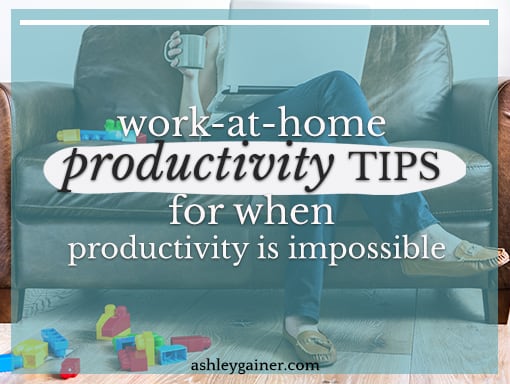
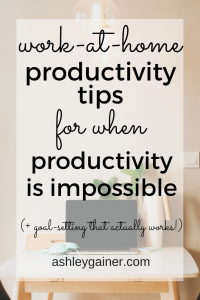

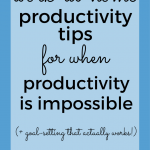
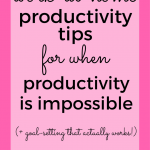

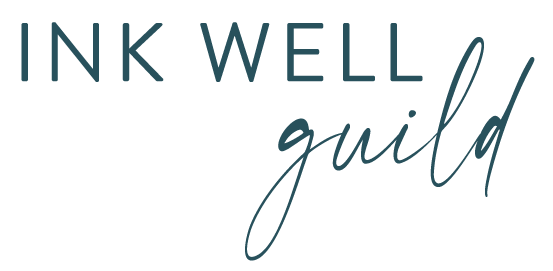
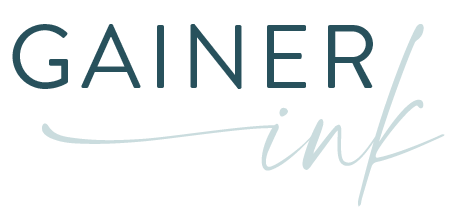
Pingback: How to work from home with a baby (a survival guide from a been-there-done-that mama)
Hi Ashley,
Thank you for another actionable post. I love the advice about making the first part of the day for me. In my life, that means scripture reading before the boys wake up.
Even though it is not directly related to my business endeavors, *everything* throughout my day hinges on being able to do it. When I notice I am irritable, less productive or more impatient than usual (and that is saying something), it is often because I skipped that crucial part of my day.
Oh and I love the part about the green glitter…when my oldest son was about two, he got into the fridge, grabbed every powdery thing he could reach and must have done a rendition of “The Hills Are Alive” with flour, baking soda, etc. in his hands. When I woke up, it looked like it had snowed in the living room (R.I.P. photo printer).
Sharing this in a lot of places. <3